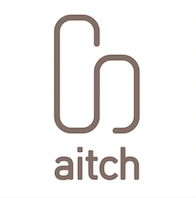#21: How do you eat an elephant? A 6-part framework to chew on for your next creative project
Answer: One intentional, proactive and well-planned bite at a time.
Anything worth doing well is worth doing slowly and intentionally, but this is especially important if you’re taking on a big creative project and you need to figure out how to successfully eat your elephant.
Here’s a fun framework to get you moving in the right direction:
The Feet — Foundation Phase
The foundation from which to plan your work. Create your workflow systems and process at the beginning to optimise your productivity — set up empty folders and choose your naming conventions for files and documents to keep things organised from the outset.
The Legs — Planning Phase
Set your intentions and prepare to operate by plotting your project phases and micro goals. A project map details all actions to be taken, a timeline for completion, estimate of hours to be spent and work-in-progress notes. Use your project map to track your progress.
The Body — Build Phase
Build your spine by setting up all documents upfront so you can dip in and out of different sections as you work your plan and get into the flow.
Spend time ideating and conceptualising. The creation phase is layered and requires different thinking at different times. Start with the part you dread first, just rough draft it, you can always come back to it and shape it further when you’re more deeply immersed.
Getting over the hump allows you to move more quickly into the project bits you find easier and more exciting. Spend more time on the parts you love without the pressure — or anxiety — of the thing you might be tempted to leave until last.
The Head — Review Phase
Time to assess. Step back and review with a trained eye. Run though your plan, check you’ve covered all your bases and everything aligns with your strategy and intentions at the start. Do final project checks and decide if you’re ready to share, preview, launch or go live.
The Ears — Test Phase
Be receptive and open to new ideas. Test, iterate, ask for feedback. Use this as an edit-adapt-evolve-phase. Remember, where you start is not necessarily where you end up — it might be somewhere better! Trust your instincts and make the changes needed to optimise to completion.
The Trunk — Reward Phase
Last spit and polish before you hit the green button and celebrate a well-completed project. Then the moment of triumph — or trumpeting — is all yours. It’s important to celebrate your wins and reward yourself when you’ve followed through and done the impossible: eaten a whole elephant.
*Note: No real elephants were harmed in the making of this framework.
Read this on Twitter and join the conversation!
Thanks for reading.
Please subscribe if you’d like Wordstrings in your inbox.

